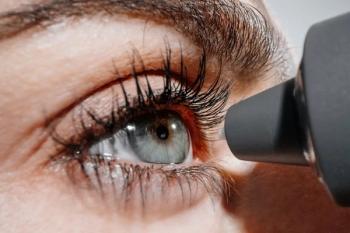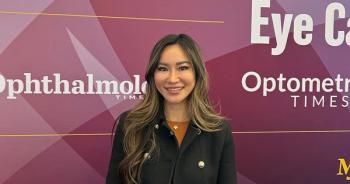
Editorial: The patient's ideal eye-care practice
Although the patient's ideal eye-care practice might not actually exist, something very close to the ideal practice does exist in many optometry practices throughout the world, much of the time in areas being best-served by optometry, rural America. And it is much more achievable than one might think.
Key Points
The ideal practice must have a friendly, knowledgeable staff; a stunning, modern optical area with a vast collection of frames and sunglasses; and the newest and most advanced lens options, all eloquently and appropriately offered and dispensed.
Without delay, a highly trained technician would do a terrific job updating patient medical histories on a flawless, intuitive electronic health record system, distilling the most vague and complex complaints ("My vision isn't blurry, but my eyes definitely seem blurry.") into concise summaries. In the exam room, retinal photos and educational videos would be provided on flat-screen monitors.
Regarding surgery, the practice would offer the world's best refractive, cataract, corneal, oculoplastic, and retinal surgery-all available right there at the office's tranquil eye surgery center.
Diagnostic equipment would be superb, including anterior and posterior segment cameras, an optical coherence tomography (OCT) system, a scanning laser polarimeter for glaucoma screening, a confocal scanning laser ophthalmoscope for imaging, a preferential hyperacuity perimeter for analysis, a pachymeter, a corneal topographer, an abberometer, and every wonderful new gadget for testing IOP, blood pressure, diastolic perfusion pressures-all at a price any patient could afford.
By the end of my long flight, here's the conclusion at which I arrived: although the patient's ideal eye-care practice might not actually exist, something very close to the ideal practice does exist in many optometry practices throughout the world, much of the time in areas being best-served by optometry, rural America. And it is much more achievable than one might think.
Today's primary-care optometrists have a wealth of knowledge at the ready, with excellent continuing education-online and in person-more accessible than ever before, with which to continue expanding that knowledge and honing those skills.
Equipment today, while often expensive, will be the best investment an optometrist will ever make. For instance:
Retinal camera-Imperative for eye-care practice today. Seeing one new patient with suspected glaucoma or a patient with macular degeneration per day could generate enough revenue in the first year to pay for that camera twice. With new technology that may be available later this year, that rate of return may be more like 800% in the first year. Try getting that from your certificates of deposit.
OCT-One of the most expensive diagnostic tools in our "ideal" practice today. Thousands of patients will get to keep their vision due to this amazing technology. Unfortunately, some of these beauties can set one back 80 grand.
Let's do the math, however. One patient per day with macular degeneration, seen quarterly, would generate enough revenue sufficient to pay for that OCT within 1 year. Don't have that many patients with age-related macular degeneration? Buy a used model for half the price, or partner with one, two, or more optometrists in your area and share a portable model.
As for surgical services, opportunities exist to partner with highly skilled cataract, retina, glaucoma, and refractive surgery specialists-often under our own roofs-to provide our patients with excellent, much-needed, specialized care.
A patient's ideal practice? Something very close is achievable after all. The optometrist is the perfect primary-care leader of that practice, concentrating on primary and perioperative eye-health care and coordinating tertiary ophthalmic surgical, neurological, internal, and family medical care when needed.
Kenneth R. Mueller, OD, is a partner in International Eyecare and Laser Centers, a rural, optometrist-owned practice with 10 primary-care ODs who utilize six ophthalmologist specialists. They use retinal cameras, corneal topographers, aberrometers, visual field analyzers, scanning laser polarimeters, confocal scanning laser ophthalmoscopes, optical coherence tomography systems, preferential hyperacuity perimeters, selective laser trabeculoplasty, refractive and Nd:YAG lasers, laser biometers, A-scan sonography imaging, and many other pieces of technology-not a single one of which has turned out to be a bad investment in his opinion. Dr. Mueller may be contacted at
.
Newsletter
Want more insights like this? Subscribe to Optometry Times and get clinical pearls and practice tips delivered straight to your inbox.


















































.png)


